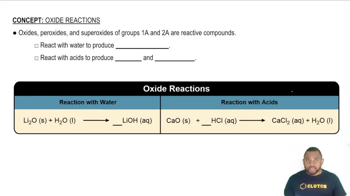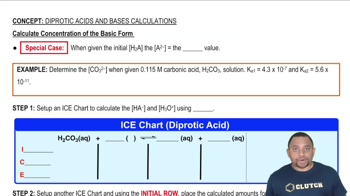Here are the essential concepts you must grasp in order to answer the question correctly.
pH Scale
The pH scale measures the acidity or basicity of a solution, ranging from 0 to 14. A pH of 7 is neutral, below 7 indicates acidity, and above 7 indicates basicity. The pH is calculated as the negative logarithm of the hydrogen ion concentration in the solution, which is crucial for understanding the behavior of acids and bases.
Recommended video:
Sodium Oxide and Hydrolysis
Sodium oxide (Na2O) is a basic oxide that reacts with water to form sodium hydroxide (NaOH), a strong base. This reaction increases the concentration of hydroxide ions (OH-) in the solution, which directly affects the pH. Understanding this hydrolysis process is essential for calculating the resulting pH of the solution.
Recommended video:
Concentration Calculations
To calculate the pH of a solution, it is important to determine the concentration of hydroxide ions produced from the dissolved sodium oxide. This involves converting the mass of sodium oxide into moles and then calculating the molarity based on the final volume of the solution. Accurate concentration calculations are fundamental for determining the pH.
Recommended video:
Calculate Concentration of the Basic Form
 Verified step by step guidance
Verified step by step guidance


